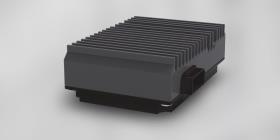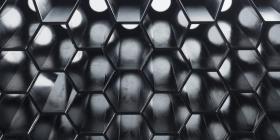
Extended lifetime – Makrolon® TC for heat dissipation in Li-ion batteries
Thermally conductive, but plastics?
Usually plastics are thermal insulators, however, Covestro introduced a new portfolio of thermally conductive polycarbonates, Makrolon®TC, allowing our customers to choose between electrically conductive and electrically insulating materials, that are also flame retardant according to the UL94 V classification. Electrically conductive Makrolon® TC grades provide a thermal conductivity of up to 16 W/mK in plane and 1.4 W/mK through plane whereas electrically insulting grades offer up to 1.4 W/mK in plane and 0.3 W/mK through plane (acc. to ASTM E 1461-01, 23 °C). These thermoplastic resins combine heat management capability with key-strengths of polycarbonates, such as excellent dimensional stability, low warpage, nearly isotropic shrinkage and high heat resistance.
How to use Makrolon® TC?
The high-speed charging and discharging demand, particularly in electric vehicles, triggers a chemical reaction in batteries that can push their temperature to dangerous levels. Battery cooling systems are designed to maintain maximum operating temperatures of 40°C or less, and they should never exceed 60° C for an extended period. At 150° C and above, cell breakdown in batteries can turn into a self-feeding cycle called thermal runaway, putting the car’s occupants at serious risk.
Makrolon® TC120 FR (flame retardant), Makrolon® TC110 and Makrolon® TC120 are thermally conductive and electrically insulating materials ideally suited for air-cooled systems.
In EV applications they can open the door to new possibilities, such as thermally conductive but electrically insulating cell holders, housings that dissipate the energy of power electronics and control units, or replacing metals with more flexible heat sink designs. These electrically insulating Makrolon® TC grades can be used to protect electronics while enabling efficient heat dissipation.
Cell holders or cooling plates made of electrically insulating Makrolon® TC grades can extend cell life-time by homogeneously distributing the heat and reducing the temperature gradient within the module and pack, as shown in own powertools Li-Ion batteries simulations.
When higher heat dissipation is required, electrically conductive Makrolon® TC629 is the material of choice. Both materials, electrically insulating and conductive ones, could be easily combined in a 2K-shot injection process to take advantage of both electrically conductive and insulating properties.
How can Makrolon® TC compete with metals?
Efficient heat dissipation is not only a matter of the thermal conductivity physical value, but rather synergy with cooling element designs. With the right design approach, Makrolon® TC grades have proven in various applications to be able to reach the same thermal management performance as metal heat sinks, while at the same time reducing cost, lower manufacturing complexity and weight, and a higher design freedom.
Last but not least, Makrolon® TC provides low thermal expansion coefficients quite close to Aluminum or Copper. This allows smart replacement of, e.g., die-cast Aluminum parts and improvement of design space.
Covestro has a vast experience in supporting our customers in part design, mold filling- and thermal simulations, to achieve their heat dissipation goals.
How to benefit from our battery thermal management systems expertise?
By working together we can understand your design objectives and requirements allowing us to recommend and test the ideal material combination to bring your energy storage and battery-driven applications to life.
“Battery safety issues like hot spots can be reduced by using Makrolon® TC in electric drive train components. . By partnering with our customers to introduce these new material options to batteries and power electronics our materials can extend the lifetime of their electric devices.”
Key Benefits
- Extended lifetime Material inherent heat dissipation safeguards against hot spots
- Efficient processing Injection molding allowes precise and complex parts and scalable production
- Customized thermal and electrical properties Materials with different thermal conductivities available while offering electrically insulating or conductive properties
- Dimensional stability Low warpage, nearly isotropic shrinkage and low thermal expansion close to Aluminum or Copper













